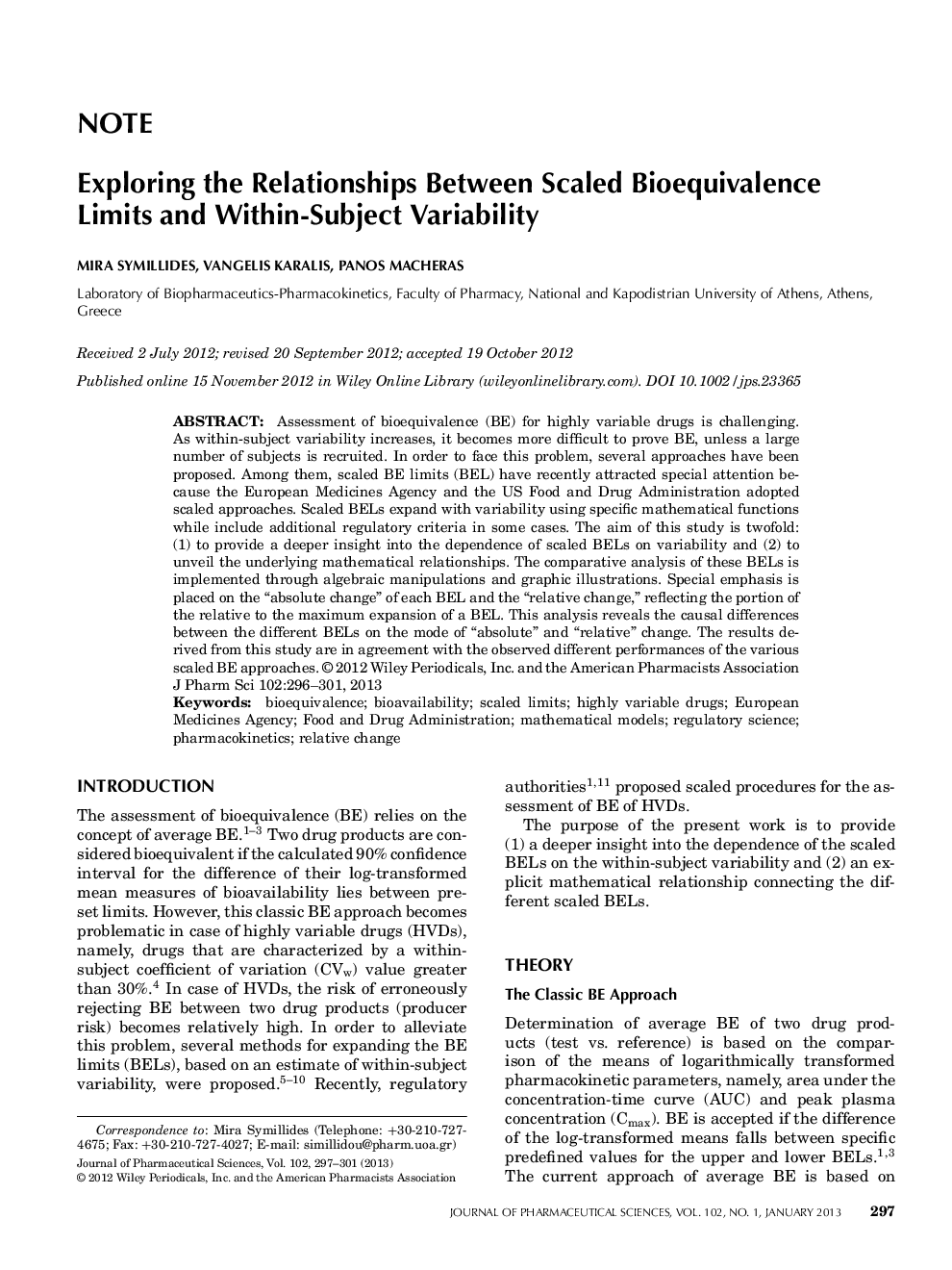| Article ID | Journal | Published Year | Pages | File Type |
|---|---|---|---|---|
| 2485461 | Journal of Pharmaceutical Sciences | 2013 | 5 Pages |
Abstract
Assessment of bioequivalence (BE) for highly variable drugs is challenging. As withinâsubject variability increases, it becomes more difficult to prove BE, unless a large number of subjects is recruited. In order to face this problem, several approaches have been proposed. Among them, scaled BE limits (BEL) have recently attracted special attention because the European Medicines Agency and the US Food and Drug Administration adopted scaled approaches. Scaled BELs expand with variability using specific mathematical functions while include additional regulatory criteria in some cases. The aim of this study is twofold: (1) to provide a deeper insight into the dependence of scaled BELs on variability and (2) to unveil the underlying mathematical relationships. The comparative analysis of these BELs is implemented through algebraic manipulations and graphic illustrations. Special emphasis is placed on the “absolute change” of each BEL and the “relative change,” reflecting the portion of the relative to the maximum expansion of a BEL. This analysis reveals the causal differences between the different BELs on the mode of “absolute” and “relative” change. The results derived from this study are in agreement with the observed different performances of the various scaled BE approaches. © 2012 Wiley Periodicals, Inc. and the American Pharmacists Association J Pharm Sci 102:296-301, 2013
Keywords
Related Topics
Health Sciences
Pharmacology, Toxicology and Pharmaceutical Science
Drug Discovery
Authors
Mira Symillides, Vangelis Karalis, Panos Macheras,
